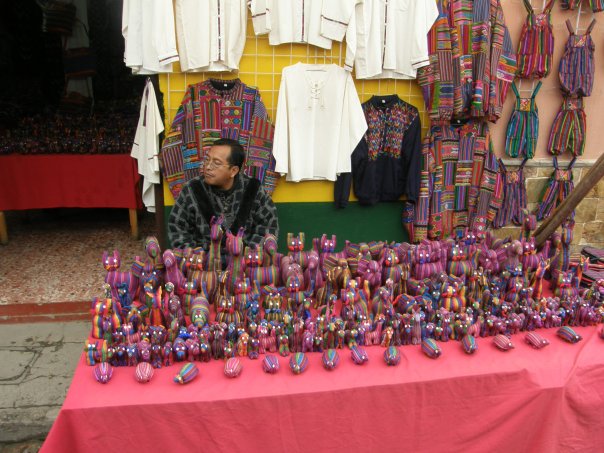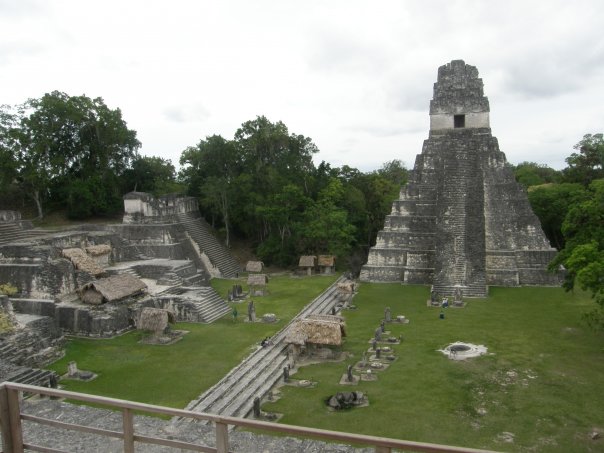Woody Harrelson, a run-down campervan, a pickle and a cartoon. Leave it to Hollywood to convey so imaginatively the message from an ancient culture. Acting as a deranged hippy, Harrelson dances about his campervan passionately rambling on about imminent doomsday in December 2012 - or as he so elegantly puts it “The end of the world, my friend”. But if, like us at Candela, you are a mere mortal, here's an attempt to decipher the pickle conundrum.
Loosely based on the ancient Mayan prophecy that the world will enter a new phase in mid December 2012, the Hollywood blockbuster plays on the common fear that the human race is going to be wiped off the face of the earth in an apocalypse due to extreme climate change. Armed with an estimated budget of close to $US200 million, the director Roland Emmerich set out to shock the viewer and hammer home the idea of impending doom. The impressive special effects make the apocalyptic scenario seem ever more real, despite the message being slightly marred by some mediocre acting by the likes of John Cusack.
However, rather than being a boring basher of Hollywood corn, lets get straight to the point: could any of this be true and what did the Mayans know that we don’t? Despite its tasteless humour and average acting, the fact that 2012 is based on a puzzling prophecy from an ancient, mysterious civilisation makes it slightly more intriguing than a generic Hollywood film - or so it seems. In actual fact the apocalyptic prediction that is presented as concrete information in the film is a highly contentious topic. The first question that comes to mind is: who were the people that made this prediction?
The Maya were a Mesoamerican civilization who populated Central America. Focused in the Yucatán area of Mexico, they spread as far north as the top of the Yucatan Peninsula and as far south as El Salvador and western Honduras. Established around 2000 BC the Maya continued to dominate Central America until the arrival of the Spanish conquistadores in the 16th century. They developed efficient agricultural techniques and increased urbanisation occurred with large cities being formed all over Central America. These cities dominated the surrounding areas and were constantly at war with rival cities- some wars even going on for decades. People often believe that the first skyscraper in North and South America was built in the US in the late nineteenth century but in reality the Maya built the first skyscraper centuries before the term skyscraper was even conceived. They constructed massive temples with intricate carvings with structures that were often based around planetary movements. Their culture was fascinated by astronomy and their achievements in this area are arguably their greatest feat. It is research in this area from which the 2012 film claims to derive its facts concerning the brewing apocalypse that is supposedly scheduled to occur in December 2012.

The Maya were gifted astronomers who had a profound understanding of the heavens. At every major city there were always priests dedicated to studying the stars in the sky above us. However it is difficult to truly envisage how much these priests knew because the majority of their knowledge that was written down has been lost and this is not helped by the way these priests recorded their knowledge. They passed on their knowledge from generation to generation verbally, which therefore makes it difficult to find out the extent of their knowledge, much of which was lost with war and disease. It is however evident from the calendar they used, that they had a profound awareness and understanding of what was going on above them.
The Maya produced numerous types of calendars representing different time frames but the one that is the driving force behind recent claims that the human race is facing possible extinction in 2012 is the Mesoamerican Long Count Calendar. This ancient calendar runs out on the 21st December 2012 and enters a new cycle. These cycles last thousands of years and it is believed that the current cycle which we are in started on 3114 BC. What is more interesting, however, is that an event that only occurs every 25,800 years is due to take place “on the next day, 22 December 2012," according to Mayan astrologer Adrian Gilbert. "The sun will be aligned, at the winter solstice, with a 'star-gate' at the centre of our galaxy,” How did the Mayans know about this alignment? This still remains a mystery. Moreover, assuming the calendar was scheduled to enter a new cycle with the occurrence of this rare event, what does this signify?
The film claims that this beginning of a new cycle will signify rapid change on the planet meaning the possible decimation of the human race and the planet as we know it. However, there is no concrete evidence that this is how the Mayans interpreted this beginning of a new cycle. What is certain is that the beginning of a new cycle signifies change and transformation. Whether this change is positive or negative is unknown.
Doomsday event or cause for celebration?
There are conflicting interpretations of the end of the cycle in which we currently reside - some offer a morbid ending whilst others offer more positive interpretations with some even maintaining that it will be a day of enlightenment and a cause for celebration. In his book The End of Time: The Mayan Prophecies Revisited, Adrian Gilbert claims that “...the Mayan calendar prophesises some sort of cosmic visitation in 2012.” NASA has undermined Gilbert’s theory claiming that it is just a galactic alignment and this is nothing that will bring anything out of the ordinary. What all the theories share is the lack of evidence supporting them.
The film focuses on the “pole shift” theory where the location of the poles change, causing mass destruction on a global scale. This is a different theory that has nothing to do with the Mayan theory apart from the fact that it is predicted to occur in 2012. Many other theories have been produced surrounding the attention that the film has attracted and this has meant that they have been wrongly linked to the Mayan theory and now people wrongly associate doomsday theories with the Mayan theory even though it only advocates change, not the extermination of the human race. Jesús Gomez, head of the Guatemalan confederation of Mayan Priests and spiritual guides said in November “There is no concept of apocalypse in the Mayan culture."
Today there are roughly 6 million Mayans living in and around Central America. In more remote areas they only speak their local Maya dialect but on the whole the majority of the Mayans speak both Spanish and their local Maya dialect. Nowadays modern Maya Religion is characterised by a mix of Catholicism and ancient Maya beliefs and rituals.
Having recently gone to the two ancient Maya cities of Tikal and Copán, I questioned some of the local Mayans living in the surrounding areas about the doomsday predictions. They were adamant that the Maya view on the new cycle had been massively distorted and changed to suit modern doomsday predictions. Unlike some ancient civilisations that were wiped out completely, there is still a relatively large modern Mayan population residing in Central America who even now wear traditional clothing and practise the Mayan way of life attending ancient rituals and religious festivals. Often persecuted by governments in Central America in attempts to assimilate them into a national culture or just simply to oppress them, they have stayed true to their ancestors and have continued to hold onto their traditional way of life and culture. One of the local villagers that I spoke to said “rather than a date to fear or worry about, I understand the date as a natural transition where there will be a great change in the morality of the human race”. By this he meant that because now nearly the whole world is feeling the effects of global warming, he thought that this would spur on the world leaders to really try to make an effort to halt global warming and live in a more environmentally friendly way.
Nobody truly knows what the ancient Maya meant when they were referring to the transition of moving from one cycle to another in their calendar but what is certain based on the advice of modern Mayans is that they were definitely not explicitly referring to an apocalypse.

















